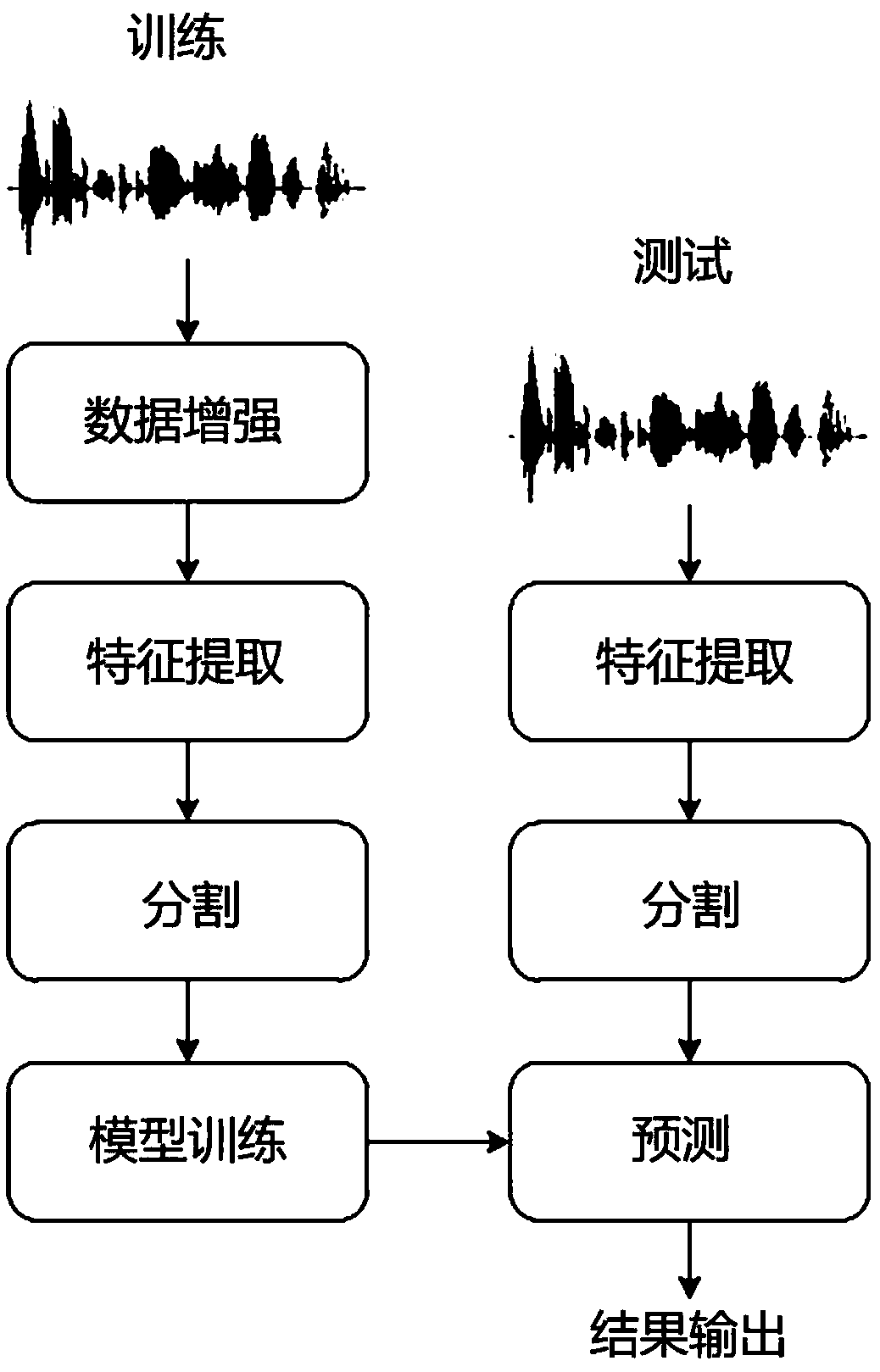Environment sound identification method and system based on convolutional neural network
A convolutional neural network, environmental sound technology, applied in biological neural network models, speech recognition, neural architecture, etc., can solve problems such as limited application scope, poor robustness, and inconvenient feature extraction
- Summary
- Abstract
- Description
- Claims
- Application Information
AI Technical Summary
Problems solved by technology
Method used
Image
Examples
Embodiment Construction
[0019] This embodiment is tested on three public datasets ESC-10, ESC-50 and UrbanSound8K datasets, such as figure 1 shown, including:
[0020] Step 1) Data enhancement: the number of sound samples in the three public data sets is small, and this embodiment uses time extension processing and pitch conversion processing to expand the training samples to enhance the generalization performance of the model.
[0021] The time extension processing refers to speeding up or slowing down the sound without changing the pitch of the sound and obtaining new samples.
[0022] The pitch conversion process refers to raising or lowering the pitch without changing the duration of the sound and obtaining new samples.
[0023] Step 2) feature extraction: use the FFT transform to obtain the amplitude spectrum of the sound, take the square to obtain the energy spectrum of the sound, and then use the Mel filter bank to convert the energy spectrum of the sound to the Mel frequency representation t...
PUM
 Login to View More
Login to View More Abstract
Description
Claims
Application Information
 Login to View More
Login to View More - R&D
- Intellectual Property
- Life Sciences
- Materials
- Tech Scout
- Unparalleled Data Quality
- Higher Quality Content
- 60% Fewer Hallucinations
Browse by: Latest US Patents, China's latest patents, Technical Efficacy Thesaurus, Application Domain, Technology Topic, Popular Technical Reports.
© 2025 PatSnap. All rights reserved.Legal|Privacy policy|Modern Slavery Act Transparency Statement|Sitemap|About US| Contact US: help@patsnap.com



